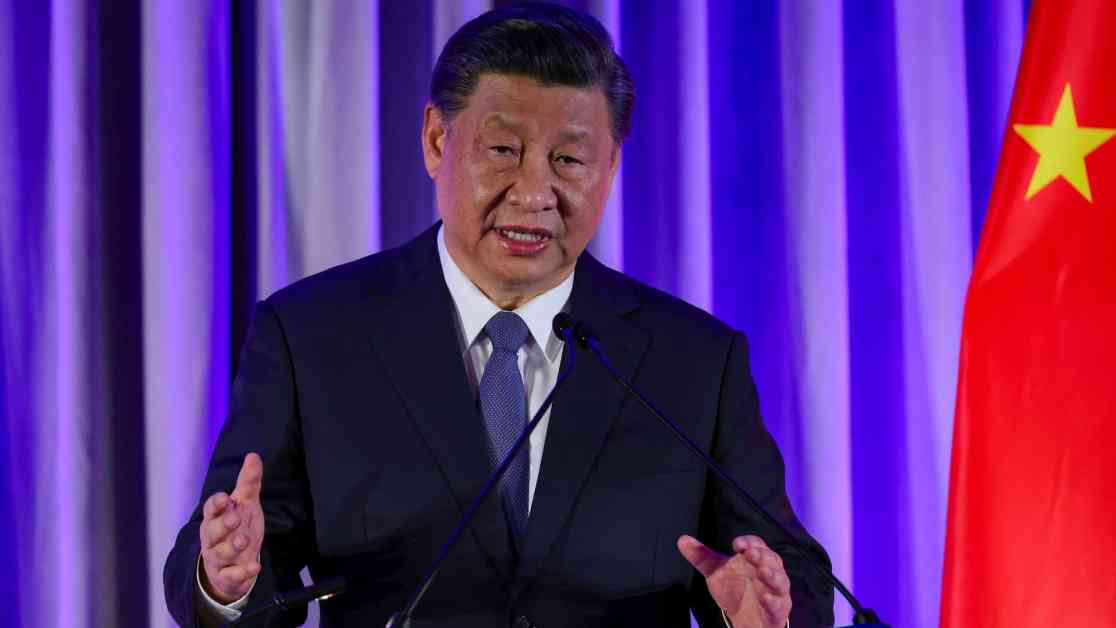China’s Xi Jinping Urges Action to Halt Real Estate Decline amid Public Concerns
Builders in Yuexi County, Anqing city, Anhui province, China, have intensified construction efforts to combat the ongoing property slump. This move comes as Chinese President Xi Jinping leads a high-level meeting of the Politburo, where top leaders expressed the need to stop the real estate market decline and stimulate a stable recovery.
The readout from the meeting, as reported by state media and translated by CNBC, emphasized the importance of addressing the concerns of the masses. It called for a concerted effort to strengthen fiscal and monetary policy support, while also touching on various issues ranging from employment to the aging population. While the specifics of the measures were not detailed, the overall message was seen as a positive step by experts.
Zhiwei Zhang, president and chief economist at Pinpoint Asset Management, welcomed the meeting’s focus on economic challenges, noting that formulating a comprehensive fiscal package takes time. The stock markets in mainland China and Hong Kong responded positively to the news, with Chinese property stocks in Hong Kong surging by nearly 12%.
Real estate has long been a significant driver of China’s economy, but the sector has faced challenges since Beijing’s crackdown on developers’ high debt levels in 2020. The decline in the real estate market has not only impacted local government revenue but also household wealth. As China’s broader economic growth has slowed, there are concerns about achieving the full-year GDP target of around 5% without additional stimulus.
Official data indicates that the decline in the real estate sector has eased slightly in recent months. While the value of new homes sold fell by 23.6% for the year through August, this was a slight improvement from the 24.3% drop recorded year-to-date as of July. Average home prices also saw a modest improvement, falling by 6.8% in August compared to a 7.6% decline in July.
Yue Su, principal economist at the Economist Intelligence Unit, highlighted the importance of stabilizing the housing market to encourage households to make purchases and break the ‘wait-and-see’ cycle. The focus of the policy measures is not to boost housing prices for a wealth effect but rather to reduce the sector’s drag on the overall economy.
The meeting on Thursday called for measures such as limiting growth in housing supply, increasing loans for whitelisted projects, and reducing interest rates on existing mortgages. The People’s Bank of China also announced planned interest rate cuts to lower the mortgage payment burden by 150 billion yuan ($21.37 billion) annually.
The significance of Thursday’s meeting lies in the centralized decision-making process in China, where policy directives are increasingly determined at the highest levels of leadership. Zong Liang, chief researcher at the Bank of China, noted that the meeting reflects an overall policy direction and follows a positive market response to previous policy announcements.
The shift in tone regarding China’s economic targets suggests a more balanced approach between short-term growth and addressing structural issues. Bruce Pang, chief economist at JLL, pointed out that policymakers are seeking middle ground to manage growth expectations effectively.
While some analysts anticipate more proactive initiatives from Beijing, others caution that the effectiveness of fiscal stimulus in China may be waning. S&P Global Ratings analysts have noted that fiscal stimulus is becoming more of a strategy to buy time for longer-term goals rather than a solution in itself.
In conclusion, China’s efforts to halt the real estate decline and stimulate economic recovery are crucial for sustaining growth and addressing structural challenges. The outcome of the high-level meeting underscores the government’s commitment to finding a balance between short-term growth targets and long-term economic stability. As China navigates these challenges, the global community will be closely watching the country’s economic trajectory and policy responses.














